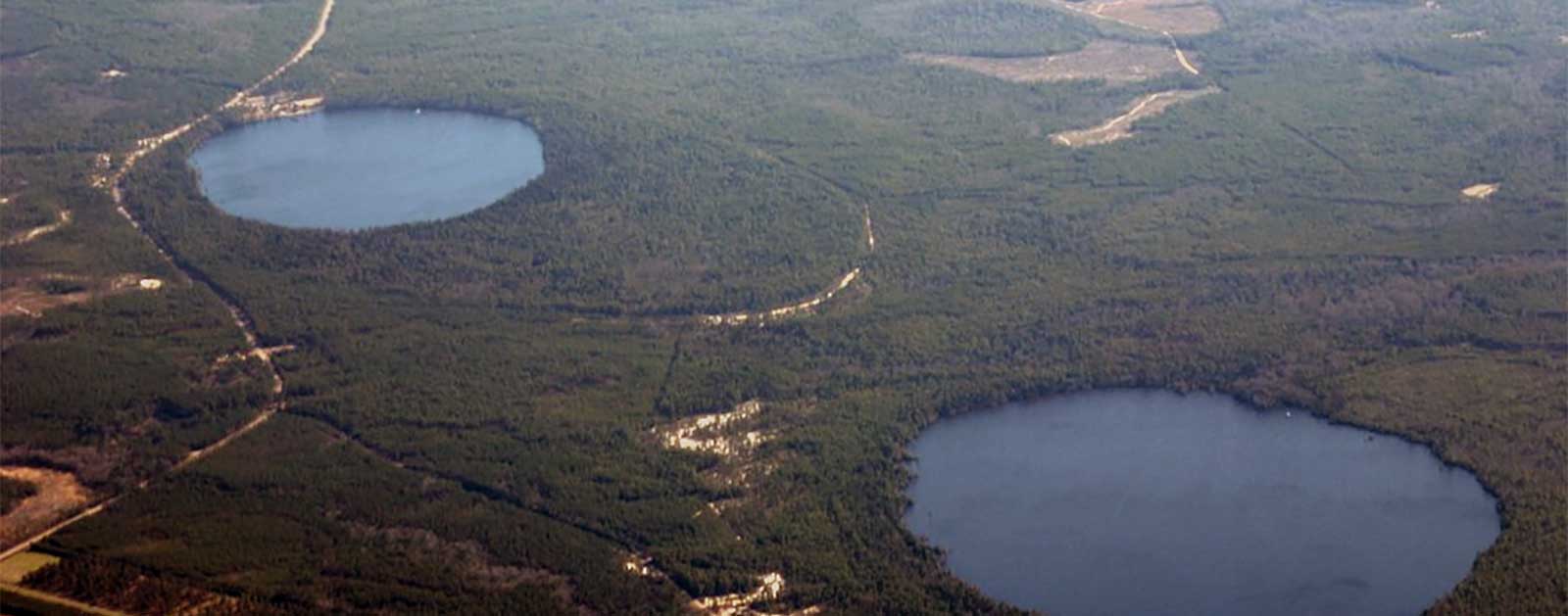For Terri Kirby Hathaway, North Carolina Sea Grant’s marine education specialist, the bays’ value as a habitat for many of the state’s rare plant and animal species is clear. [...] While other natural landscapes of the Americas were being named and noted, these low wetlands — unique reservoirs housing a wealth of beautiful and unfamiliar plant and animal species — remained inconspicuous. [...] Yet, she points out that unaltered bays function as wildlife habitat for several endangered animals and rare plants, and support an array of unique communities of species. [...]
“The north shore of the lake is made of a layer of limestone,” Hall notes. “Limestone neutralizes the acid coming from the creeks, making the water a neutral pH.” He explains that the lake’s particular pH allows for a high diversity of plant and animal species.
Along with five species on the state’s rare plant list — the Venus-hair fern, green-fly orchid, seven-angled pipewort, narrowleaf yellow pondlily and water arrowhead — Hall notes seven animal species endemic to Lake Waccamaw. [...]
Some typical pocosin habitats also are suitable homes for rare insectivorous plants, such as the Venus flytrap and pitcher plant. Hall explains that the Venus flytrap only can be found within a 60-mile radius of Wilmington. These peculiar, sun-loving carnivores thrive along the sandy edges of a swampy bay depression. [...]
Bruce Sorrie, then inventory specialist with the N.C. Natural Heritage Program, described one of these “cypress savannas,” Antioch Church Bay in Hoke County, as the best example of a clay-based bay in the state and one of the best in the country.
“It combines large size, excellent quality natural community, and high-ranked populations of numerous rare plants and animals,” Sorrie noted in a 2004 inventory of Hoke County’s significant natural areas.
The bay is typically shallowly flooded during winter and spring. During summer and fall, it is exposed and hosts a spread of grasses, sedges and colorful wildflowers, such as the rare awned meadowbeauty, Rhexia aristosa.
As of 2004, seven rare animals and 10 rare plants were documented residing in the bay, including one Federally Endangered species and two Federal Species of Concern. Sixteen species of amphibians also were documented for using the bay as a breeding site.

 Thanks to your very clear way to express concepts I come to take an interest in subjects that I would probably not have addressed and while waiting to read this new book I will read the summary of your first one, which my friend took the trouble to do.
Thanks to your very clear way to express concepts I come to take an interest in subjects that I would probably not have addressed and while waiting to read this new book I will read the summary of your first one, which my friend took the trouble to do.


 Can't wait to read your new book, Pierre! It sounds very interesting. Much to learn it looks like! Please let us know when it's on the market.
Can't wait to read your new book, Pierre! It sounds very interesting. Much to learn it looks like! Please let us know when it's on the market.

